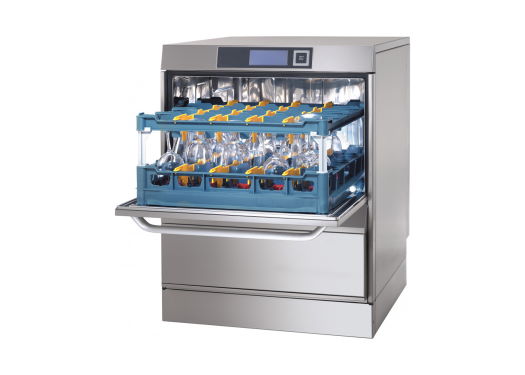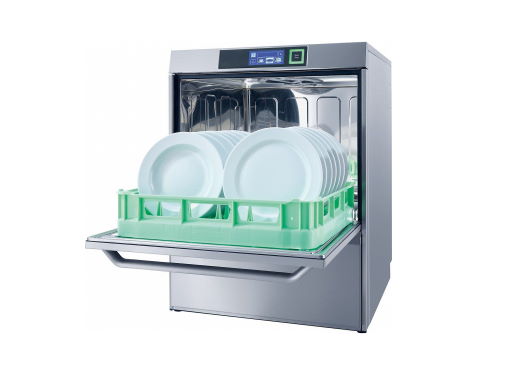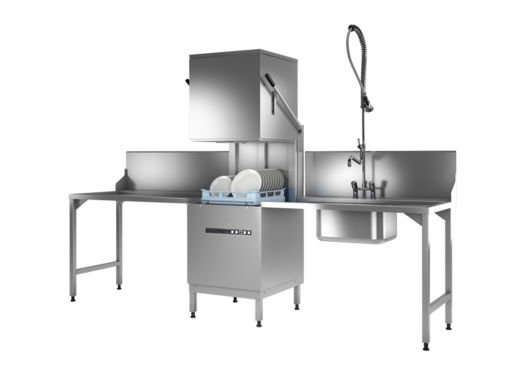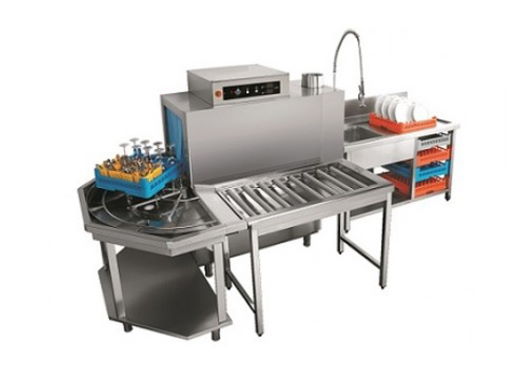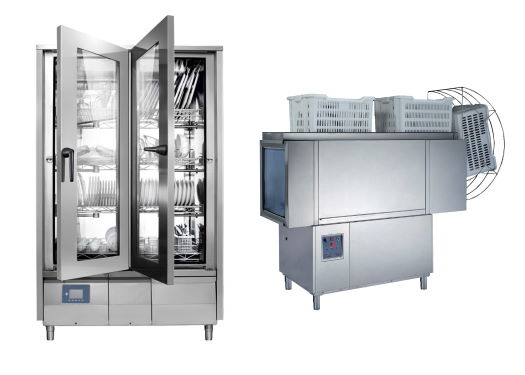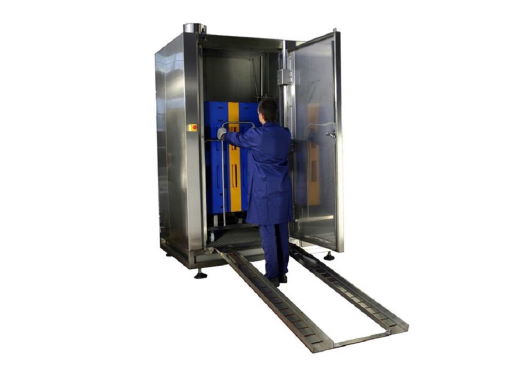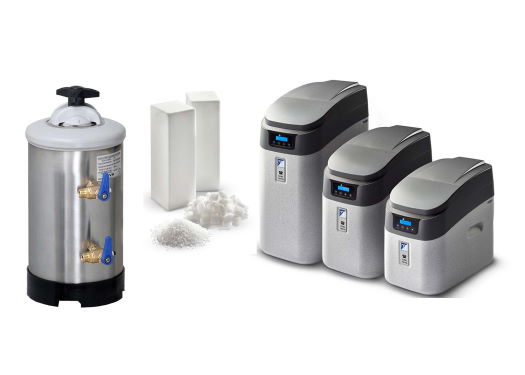Commercial dishwashers must be supplied with a softened water supply to work correctly. We can advise you if you need to have a water softener in your area.
Water softeners for commercial dishwasher come in 5 varieties:
- Manual
- Integral
- Continuous
- Automatic cold
- Automatic hot
Manual water softener
A stainless steel cylinder about the size of a medium fire extinguisher with a water inlet and water outlet. Manual water softeners need to be manually re- generated 1-2 times a week dependent on you water hardness and the amount of washes you do in a week. For instructions on how to regenerate a manual water softener -
Manual water softeners are fitted near to the dishwasher or in a cupboard nearby and you will need regular access to them.
Integral or internal water softener
These look similar to the water softeners in domestic dishwashers and need to be topped up with salt regularly unlike domestic dishwashers, they do not operate automatically. On some machines you have to remember to operate the water softener by pressing a button. On a higher specification system, a light will come on telling you to operate the water softener.
Continuous water softener
They look and operate just like the water softeners in domestic dishwashers, all you have to do is keep them topped up with salt.
Automatic cold water softener
For use on a cold water supply. What you will see is a plastic box with timers and controls on it. The water softener is plugged into the mains and connects to the water and drainage supply. It’s operation is fully automatic, all you have to do is keep it full of salt. Automatic water softeners need to be installed next to the dishwasher, under the dishwasher stand or in an adjacent cupboard.
Automatic hot water softener
As above, but for use when the dishwasher is connected to a hot water supply.
All of the above water softeners work if they are used in the correct way and are specified correctly.
The manual water softener is the cheapest and will work in all water conditions. On the down side it takes the most looking after and a regular routine to maintain its performance.
The integral water softeners have very limited resin capacity and so are only suitable for moderately hard water areas and for low usage situations.
Continuous water softeners have the same low resin volume but as they operate continuously, they are suitable for moderate use in moderate water quality areas.
Automatic water softeners have the resin capacity and are capable of operating in all water quality areas and at high wash volumes but are the most expensive.
There is no substitute for a water softener when one is needed. Electrical scale inhibitors and hard water detergents cannot be used instead of a water softener.
Remember if it doesn’t use salt it is not a water softener.

